What Are Convection Ovens? Benefits, How They Work, and Uses
Convection ovens have revolutionized the way we cook, becoming a staple in modern kitchens due to their ability to provide quicker, more efficient cooking results. But what are convection ovens, and why are they so popular? Unlike traditional ovens that rely on radiant heat, convection ovens use a fan and exhaust system to circulate hot air throughout the oven cavity. This airflow ensures even heat distribution, reducing hot spots and cooking food more uniformly. As a result, dishes are prepared faster and more consistently, making convection ovens ideal for busy households and cooking enthusiasts alike.
In addition to speed and even cooking, convection ovens are known for their energy efficiency. By cooking food at lower temperatures and in less time, they consume less energy compared to conventional ovens. This makes them an eco-friendly choice, appealing to those looking to reduce their carbon footprint without compromising on cooking quality. If you’re curious about other oven types and their features, take a look at our Complete Guide to Different Types of Ovens.
Whether you’re roasting vegetables, baking pastries, or preparing a complex meal, understanding what convection ovens are and how they work can significantly improve your cooking results. This article will guide you through the intricacies of convection cooking, exploring the benefits, best practices, and what sets these ovens apart from their traditional counterparts. From adjusting cooking times and temperatures to selecting the right cookware, we’ll provide all the tips and insights you need to make the most of your convection oven and elevate your culinary skills.
How Does a Convection Oven Work?

A convection oven operates on a simple yet effective principle: it’s equipped with a fan and an exhaust system that work together to circulate hot air around the food. This continuous airflow is what sets convection ovens apart from traditional ovens. In conventional ovens, heat rises and settles, creating uneven temperature zones that can result in inconsistent cooking. With a convection oven, the fan ensures that every part of the oven is equally heated, eliminating hot and cold spots.
Key Features:
- Fan: The fan is the heart of the convection oven. It circulates the hot air, ensuring that the temperature is uniform throughout the oven. This means that food cooks more evenly and efficiently.
- Exhaust System: The exhaust system plays a crucial role in venting excess moisture and cool air. This prevents sogginess and helps maintain the right texture in your dishes, particularly important for baked goods that benefit from a crisp exterior.
Benefits of Using a Convection Oven
1. Even Cooking
The combination of the fan and exhaust system in a convection oven promotes even cooking, making it particularly effective for baking and roasting. This technology results in perfectly cooked dishes, free from raw spots or overcooked edges. Whether you’re baking cookies or roasting a chicken, you can count on a consistently excellent outcome.
2. Faster Cooking
One of the most significant advantages of convection ovens is their ability to reduce cooking times by up to 25%. The fan circulates hot air more effectively than traditional ovens, allowing food to cook quicker. This is especially beneficial for busy households where time is often of the essence, making meal prep faster and more convenient.
3. Energy Efficiency
Thanks to their faster cooking times and ability to cook at lower temperatures, convection ovens are generally more energy-efficient than conventional ovens. This not only helps in reducing your energy bills but also makes them an eco-friendly option for environmentally conscious cooks. Find out how to choose the right oven for small spaces if you’re looking for energy-efficient models that are perfect for compact kitchens.
4. Enhanced Browning and Crisping
The dry, hot air created by the convection fan is perfect for achieving that coveted golden-brown crust on baked goods and roasts. This method helps to seal in juices while providing a crispy exterior, enhancing both flavor and texture. Whether you’re making a flaky pie crust or a perfectly roasted vegetable medley, you’ll notice a remarkable difference.
5. Versatility
Convection ovens are incredibly versatile kitchen tools. They can handle a wide range of cooking methods, from roasting meats and baking pastries to dehydrating fruits and even reheating leftovers. This flexibility makes them a valuable addition to any kitchen, allowing you to explore various cooking techniques and expand your culinary repertoire.
In summary, understanding how a convection oven works and its numerous benefits can significantly enhance your cooking experience. With even cooking, faster meal preparation, energy efficiency, improved textures, and versatility, it’s easy to see why convection ovens are favored by both home cooks and professional chefs alike.
Types of Convection Ovens

When it comes to convection ovens, there are several types to consider, each with its unique features and benefits. Understanding these differences can help you choose the right model for your cooking needs.
1. Standard Convection Ovens
Standard convection ovens are the most common type and are designed for general cooking purposes. These models come equipped with a fan that circulates hot air throughout the oven cavity, ensuring even heat distribution. They offer the core benefits of convection cooking, such as faster cooking times and improved food texture. Ideal for everyday cooking, standard convection ovens can handle a variety of tasks, from baking cookies to roasting meats. They are user-friendly and typically come with straightforward controls, making them accessible for cooks of all skill levels.
2. True (European) Convection Ovens
True convection ovens, often referred to as European convection ovens, take the concept of convection cooking a step further. In addition to the fan, these models feature an extra heating element located around the fan, which provides even more precise temperature control and cooking consistency. This design ensures that heat is distributed uniformly, minimizing the risk of uneven cooking. True convection ovens are ideal for serious home cooks who demand the best results, particularly in baking and roasting. The additional heating element allows for advanced cooking techniques and can lead to professional-quality results, making them a favorite among culinary enthusiasts.
3. Convection Microwave Ovens
Convection microwave ovens combine the best of both worlds by integrating microwave technology with convection cooking. These versatile units can quickly heat or cook food using microwave energy while also allowing for the even cooking and browning benefits of convection. This dual functionality makes convection microwave ovens perfect for smaller kitchens or as a secondary oven when you need extra cooking capacity. They are particularly useful for those who want to speed up cooking times without sacrificing quality. Whether you’re reheating leftovers, baking a small batch of cookies, or roasting vegetables, convection microwave ovens provide a flexible and efficient cooking solution.
Each type of convection oven offers unique advantages, catering to different cooking styles and needs. From the straightforward standard convection oven to the advanced true convection model and the versatile convection microwave, there’s a perfect option for everyone. By understanding the distinctions among these types, you can make an informed decision that enhances your cooking experience and fits seamlessly into your kitchen.
Convection Oven vs. Conventional Oven
Choosing between a convection oven and a conventional oven can significantly impact your cooking results. Each type has its unique structure, cooking method, and benefits, making them suitable for different culinary tasks. If you’re exploring various types of ovens for your home, check out our Complete Guide to Different Types of Ovens for Your Home to understand all the options available. Understanding their differences can help you decide which one best suits your cooking needs.
Structural Differences
The main structural difference between a convection oven and a conventional oven lies in the presence of a fan and exhaust system. A convection oven uses a fan and an exhaust to circulate hot air around the food, ensuring even cooking throughout the oven. This mechanism allows for a consistent temperature, reducing hot and cold spots. On the other hand, conventional ovens lack this fan, relying solely on radiant heat that rises from the heating elements at the top and bottom. As a result, they often experience uneven heating, with the top and bottom of the oven being hotter than the middle.
Cooking Results
Because of the way they function, convection ovens tend to produce more evenly cooked and well-browned dishes. The constant air circulation helps cook food uniformly, resulting in perfectly baked cookies, evenly roasted meats, and golden pastries. In contrast, conventional ovens can sometimes produce uneven results, especially when baking on multiple racks. You may find that food on the top rack browns too quickly while food on the bottom remains undercooked, leading to the need for rotating dishes halfway through the cooking process.
Pros and Cons
| Convection Oven | Conventional Oven |
| Faster cooking times | Traditional cooking method |
| Even heat distribution | Often requires rotating dishes |
| Energy-efficient | Longer cooking times |
| Better browning and crisping | May produce uneven results |
When to Use a Convection Oven

Convection ovens are incredibly versatile, and understanding when to use them can elevate your cooking results. Here are some scenarios where a convection oven shines:
Roasting Meats and Vegetables
Convection ovens are perfect for roasting because they ensure even heat distribution, resulting in beautifully browned, crispy skins on meats and vegetables while keeping the insides tender and juicy. The circulating hot air helps caramelize the exterior, locking in moisture and enhancing flavor.
Baking Pastries and Pies
The dry heat in a convection oven is ideal for baking pastries and pies. It helps create flaky, well-risen baked goods with a crisp crust, which is particularly beneficial for delicate items like croissants, puff pastries, and pie crusts. The Kitchn explains how the consistent heat distribution in convection ovens ensures that pastries cook evenly and achieve a perfect texture.
Multiple Trays of Cookies
If you need to bake a large batch of cookies, a convection oven is your best friend. Unlike conventional ovens, which may require rotating trays for even baking, convection ovens can handle multiple trays at once. The circulating air ensures that all the cookies bake evenly, saving time and effort without compromising on quality.
Dehydrating Foods
Convection ovens can also be used to dehydrate foods, making them a versatile addition to any kitchen. The steady airflow helps remove moisture from fruits, vegetables, and even meats, allowing you to create homemade snacks like dried fruits, vegetable chips, and beef jerky. The low, consistent heat is perfect for drying without overcooking or burning, making it easier to achieve the desired texture and flavor.
When Not to Use a Convection Oven
While convection ovens are versatile and efficient, there are certain scenarios where they may not be the best choice. Understanding these exceptions can help you avoid disappointing results and ensure that your dishes turn out perfectly.
Delicate Baking
Convection ovens are not always suitable for delicate baked goods like custards, soufflés, chiffon cakes, and certain types of bread. The strong air circulation can cause these delicate items to cook unevenly, leading to undesirable textures. For example, soufflés may not rise properly, or custards may crack or dry out. These dishes require gentle, stable heat, which is better achieved in a conventional oven without the intense air movement.
For such items, it’s recommended to use a conventional oven, where the heat is more consistent and gentle. If you must use a convection oven, consider turning off the fan or using a lower temperature to reduce the intensity of the airflow.
Covered Dishes
When cooking covered dishes, such as casseroles or braises, convection ovens can be less effective. The fan can disrupt the cooking process by blowing away lightweight covers or parchment paper, which can lead to uneven cooking or drying out of the food. Additionally, the air circulation does not penetrate covered dishes, so the benefits of even heating are lost.
In these cases, a conventional oven is more suitable, as it provides steady heat without disturbing the cover. This helps maintain moisture and ensures that the food cooks evenly and thoroughly.
How to Use a Convection Oven Effectively
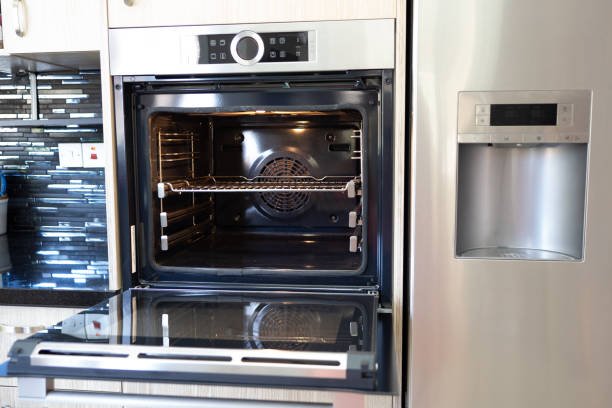
Adjust Temperature and Time
Convection ovens cook food faster due to the circulating hot air. To avoid overcooking, reduce the oven temperature by about 25°F compared to the recipe’s recommendation for conventional ovens. Keep a close eye on the cooking time, as it may be shorter than expected. It’s best to check for doneness a few minutes before the suggested time to prevent overcooking or drying out your food.
Use Proper Cookware
The type of cookware you use can significantly impact the performance of your convection oven. Opt for low-sided or rimless baking sheets and trays, as they allow for better air circulation around the food. Deep dishes, such as casserole dishes or roasting pans, can obstruct the airflow, leading to uneven cooking. Metal pans and trays are generally preferred over glass or ceramic, as they conduct heat more effectively, enhancing the oven’s performance.
Avoid Overcrowding
Proper air circulation is key to achieving the best results in a convection oven. Overcrowding the oven with too many dishes or placing food too close together can block the airflow, leading to uneven cooking. To ensure consistent results, leave space around each dish and, if necessary, cook in batches. This will allow the hot air to circulate freely, cooking the food evenly and thoroughly.
Preheating Tips
Always preheat your convection oven before placing food inside. This step is crucial to ensuring that the oven reaches the desired cooking temperature, which helps in achieving even cooking results. Most convection ovens preheat faster than conventional ovens, so be sure to set the temperature and allow it to reach the set point before adding your dishes.
Maintenance and Care
Cleaning Tips
Regular maintenance is essential for keeping your convection oven in top condition. Clean the fan and interior surfaces regularly using a non-abrasive cleaner. Avoid using harsh chemicals or rough scrubbing pads that can damage the interior coating. Wipe down the oven after each use to prevent buildup and ensure optimal performance.
Avoiding Damage
To protect your convection oven and extend its lifespan, use only oven-safe cookware that can withstand high temperatures. Avoid using glass and deep ceramic dishes, as these can block air circulation and may not be able to handle the intense heat of the convection setting. Check your cookware’s heat tolerance to prevent cracking or breaking.
By following these tips, you can maximize the efficiency and longevity of your convection oven, making your cooking experience smoother and more enjoyable.
Frequently Asked Questions (FAQs)
1. Can I Convert Recipes for a Convection Oven?
Yes, you can convert most recipes for use in a convection oven. Typically, you’ll need to reduce the oven temperature by 25°F from what the recipe calls for and check the food 10-15 minutes earlier than the suggested cooking time. This helps prevent overcooking and ensures your dish turns out as intended.
2. Is a Convection Oven the Same as an Air Fryer?
While both convection ovens and air fryers use hot air circulation to cook food, they are not the same. An air fryer is a smaller, more concentrated appliance designed specifically for creating crispy, fried-like textures with minimal oil. It uses rapid air technology and often has a basket that allows air to circulate all around the food, making it more suitable for smaller batches of food and achieving a “fried” texture.
3. What Foods Cook Best in a Convection Oven?
Convection ovens are ideal for roasting meats, poultry, and vegetables, as the circulating air ensures even browning and crispiness. Baked goods such as cookies, pastries, and pies also benefit from convection, as the dry heat helps them rise and develop a golden crust. Additionally, casseroles and dishes requiring multiple trays cook more evenly in a convection oven.
4. Can I Use Aluminum Foil in a Convection Oven?
Yes, you can use aluminum foil in a convection oven, but it’s essential to use it correctly. Avoid covering the oven’s floor or sides, as this can disrupt airflow. Instead, use foil to cover dishes or line trays, but ensure it doesn’t block the fan, as this can affect cooking performance.
5. Do I Need Special Cookware for a Convection Oven?
No special cookware is required, but using low-sided or rimless baking sheets and pans is recommended to allow better air circulation. Metal pans are preferred for their heat conduction properties. Avoid using deep dishes that may block airflow and lead to uneven cooking.
6. Why is My Food Burning in a Convection Oven?
If food is burning, it’s often due to not adjusting the temperature and time properly. Remember to lower the temperature by 25°F and keep an eye on the cooking time. Also, ensure that the fan isn’t blowing too forcefully on delicate items that could dry out or burn.
7. Can I Turn Off the Convection Setting?
Most convection ovens allow you to turn off the convection setting, converting the oven into a conventional one. This is useful for recipes that don’t benefit from air circulation, like delicate cakes or slow-cooked casseroles.
8. How Do I Clean a Convection Oven?
To clean a convection oven, remove the racks and clean them separately. Use a non-abrasive cleaner on the interior, especially around the fan, to remove grease and food particles. Avoid harsh chemicals and ensure the oven is cool before cleaning.
9. Are Convection Ovens Safe for Reheating Food?
Yes, convection ovens are excellent for reheating food, as they evenly distribute heat, preventing soggy or unevenly heated leftovers. Use a lower temperature setting and check frequently to avoid overcooking.
10. What is the Difference Between True Convection and Standard Convection?
True convection, also known as European convection, has an additional heating element around the fan, providing even more precise temperature control and uniform cooking. Standard convection uses only the fan to circulate the existing heat from the main elements, which can be slightly less consistent.
These FAQs address common concerns and questions about convection ovens, helping you make the most of this versatile kitchen appliance.
Conclusion
Convection ovens have revolutionized the way we cook, offering numerous advantages such as faster cooking times, even heat distribution, energy efficiency, and versatility. Whether you’re an amateur cook experimenting in the kitchen or a seasoned chef looking for precision, a convection oven can elevate your culinary game. By understanding how these ovens work and when to use them, you can make the most of their features and enjoy consistently delicious results.
Ready to take your cooking to the next level? Explore different convection oven models, experiment with new recipes, and discover how this kitchen powerhouse can transform your culinary experience. From perfect roasts to golden pastries, the possibilities are endless. Happy cooking!
Share this content:
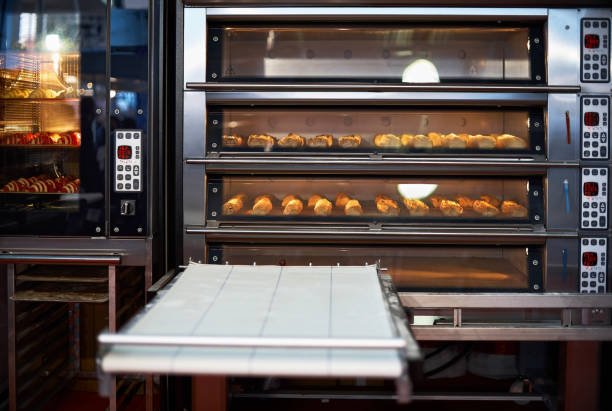


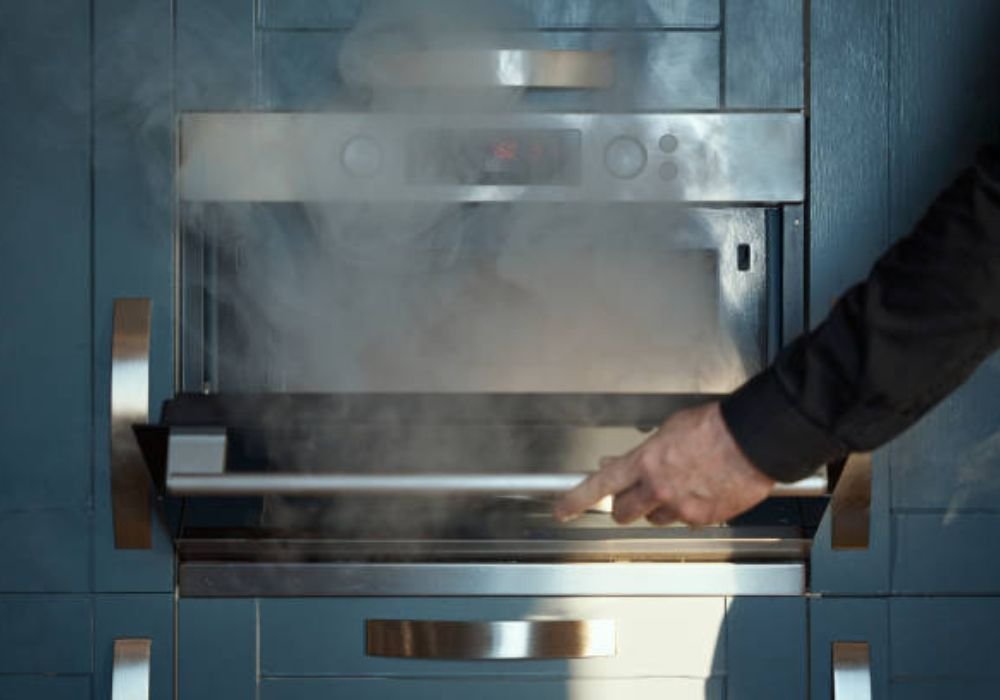
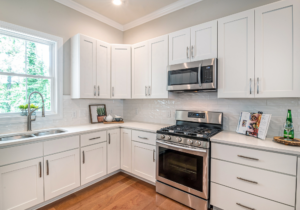
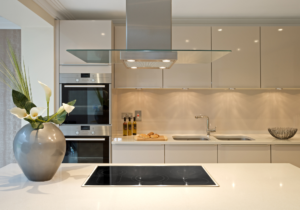
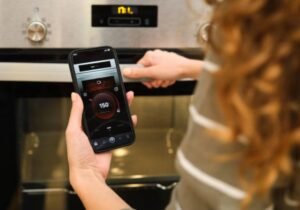

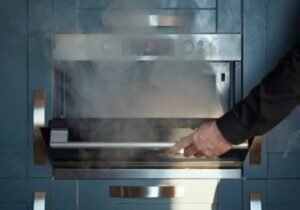

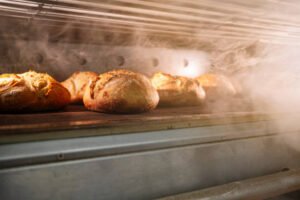
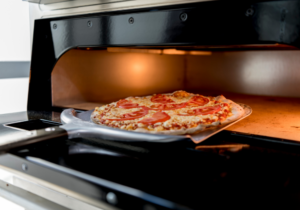
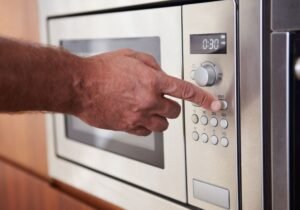
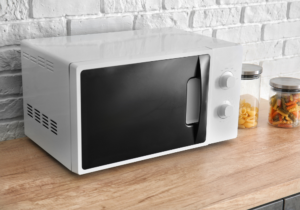
1 comment